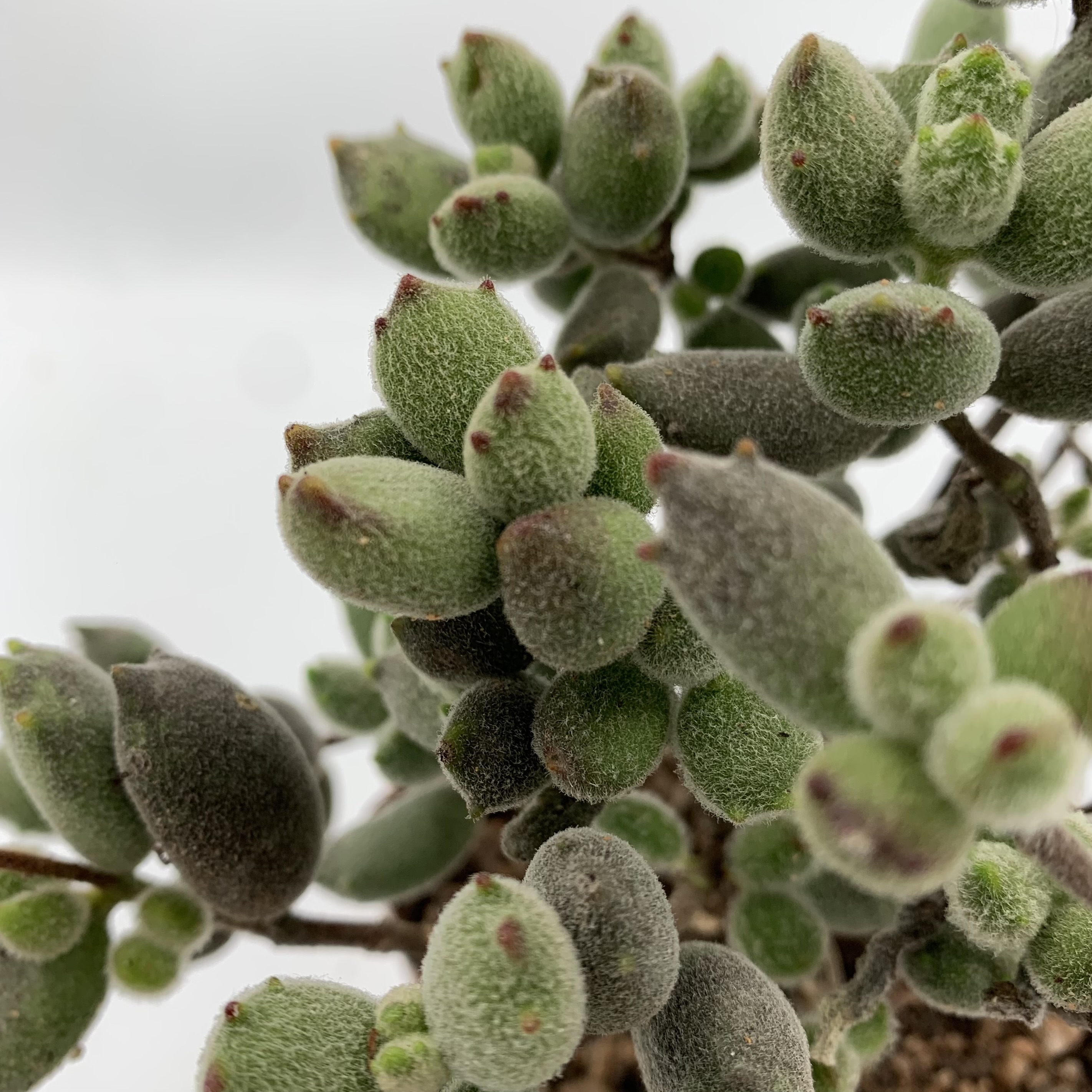
Cotyledon tomentosa
R70.00
Out of stock
Family: Crassulaceae
Cotyledon tomentosa, commonly known as the "Bear’s Paw," is a distinctive succulent native to South Africa. It is highly prized for its thick, fleshy leaves that are covered in dense, soft hairs and often have small, claw-like teeth at the tips, resembling a bear’s paw.
Origin and Habitat
This species originates from the semi-arid regions of the Eastern Cape Province in South Africa, where it grows on rocky slopes and well-drained soils. The climate is typically warm with dry summers and mild winters, conditions under which Cotyledon tomentosa thrives.
Plant Description
Cotyledon tomentosa forms a low-growing, shrubby succulent with thick, ovate to oblong leaves densely covered in fine white hairs (tomentum), which gives the plant a soft, velvety appearance. The leaves are usually green to grey-green, sometimes with reddish or brownish margins or tips. Small, triangular, claw-like teeth line the leaf edges, adding to its unique look.
In late winter to early spring, it produces clusters of tubular, bell-shaped flowers that are typically orange or red, attracting pollinators.
The plant can grow up to 30–50 cm in height and width under ideal conditions.
Care Instructions
Light
Prefers bright light to full sun. It can tolerate some partial shade, especially in very hot climates, but bright light enhances leaf coloration and compact growth.
Watering
Water thoroughly but only when the soil is dry. During the growing season (spring and autumn), water about every 1–2 weeks depending on conditions. Reduce watering significantly in winter when the plant goes dormant.
Soil
Requires well-draining soil, such as a mix of:
2 parts succulent or cactus potting soil
1 part coarse sand or perlite
1 part pumice or grit
Proper drainage is essential to avoid root rot.
Temperature
Thrives in temperatures between 18°C and 27°C but can tolerate brief periods down to 5°C if kept dry. Protect from frost.
Additional Information
Cotyledon tomentosa is relatively slow-growing and benefits from occasional feeding during the growing season with a diluted, balanced fertilizer. It is prone to root rot if overwatered, so good drainage and careful watering are key.
Propagation is commonly by leaf cuttings or stem cuttings, and the plant occasionally produces offsets.
Pests such as mealybugs and aphids may occasionally appear but are generally manageable with proper care.
Plants
Explore our rare cycads, clivias, and succulents.
Shop
Garden
© 2025. All rights reserved.
(WhatsApp)
